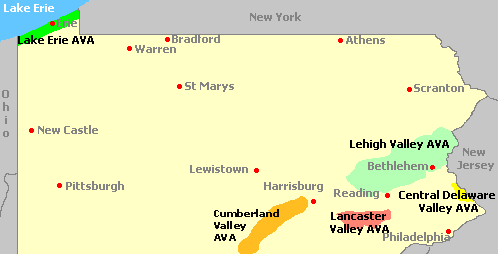American Viticultural Areas (AVAs) are designated wine grape-growing regions in the United States recognized by the Alcohol and Tobacco Tax and Trade Bureau (TTB). These regions are delineated based on specific geographic features such as climate, soil type, elevation, and topography, which influence the characteristics of the grapes grown there and the resulting wines.
AVAs serve several purposes. They:
- help consumers identify the origin and quality of wines
- provide winemakers with valuable information about the unique attributes of their vineyards
- support marketing efforts by highlighting the distinctiveness of wines produced within each area
- contribute to the protection and preservation of regional viticultural traditions and promote economic development within wine-producing regions
Overall, AVAs play a crucial role in the classification, regulation, and promotion of American wines.
The most famous AVAs, of course — such as Napa Valley, Sonoma Valley and Willamette Valley — sit in the west coast states. That said, Pennsylvania has two AVAs that exist entirely in the commonwealth, and shares 3 more with nearby states NJ, MD, NY and OH). Here’s a brief overview of the 5 Pennsylvania AVAs.

1. Central Delaware Valley AVA (shared with New Jersey):
The Central Delaware Valley AVA encompasses parts of both Pennsylvania and New Jersey, straddling the Delaware River. This AVA benefits from the moderating influence of the river, creating a climate conducive to grape growing. It is characterized by fertile soils, diverse topography, and a variety of microclimates, allowing for the cultivation of a wide range of grape varieties, including Cabernet Franc, Chardonnay, and Merlot.
2. Cumberland Valley AVA (shared with Maryland):
Stretching across Pennsylvania and into Maryland, the Cumberland Valley AVA is nestled between the Blue Ridge and South Mountains. Its diverse terrain, which includes rolling hills and valleys, coupled with limestone-rich soils, creates ideal conditions for vine cultivation. Known for its continental climate with warm summers and cold winters, this AVA is particularly suited for grape varieties like Chardonnay, Cabernet Franc, and Riesling.
3. Lake Erie AVA (shared with New York and Ohio):
As the largest AVA in Pennsylvania, the Lake Erie AVA spans multiple states, including Pennsylvania, New York, and Ohio, with its vineyards primarily located along the shores of Lake Erie. The region benefits from the lake’s moderating influence, which helps protect against extreme temperatures and extends the growing season. Its diverse soil types and maritime climate make it suitable for a variety of grapes, including Concord, Riesling, and Cabernet Franc.
4. Lancaster Valley AVA:
Situated in southeastern Pennsylvania, the Lancaster Valley AVA is known for its gently rolling hills and fertile soils. The region experiences a humid continental climate, with warm summers and cold winters moderated by its proximity to the Atlantic Ocean. These conditions are conducive to the cultivation of a range of grape varieties, including Chardonnay, and Albarino.
5. Lehigh Valley AVA:
Located in eastern Pennsylvania along the Lehigh River, the Lehigh Valley AVA benefits from a diverse terroir characterized by rolling hills, shale-based soils, and a continental climate influenced by the river and nearby mountains. This AVA has a history of winemaking dating back to the colonial era. Grape varieties such as Gruner Veltliner, Riesling, and Chambourcin thrive in this region, producing wines with distinct character and complexity.